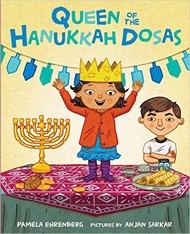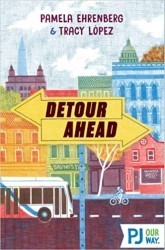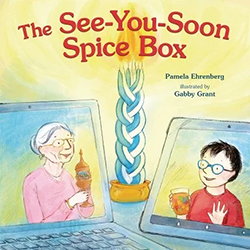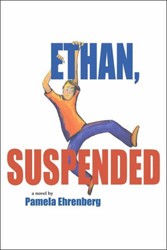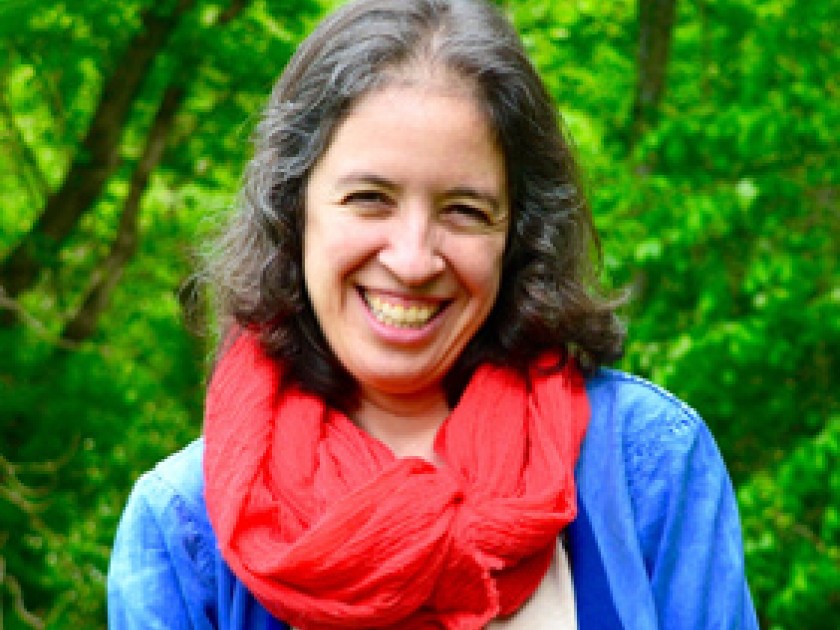
Celebrate Jewish Book Month with #30days30authors! JBC invited an author to share thoughts on #JewLit for each day of Jewish Book Month. Watch, read, enjoy, and discover!
Today, Pamela Ehrenberg, the author of Queen of the Hanukkah Dosas (Farrar, Straus & Giroux, 2017), on the need for diversity in Jewish children’s literature.
For much of 2015, I grappled with how to answer my rabbi’s provocative question, “Are Jews white?”
I grappled most strongly while riding the Metro with my seven-year-old son, whose goal was to occupy as much space as possible while attempting to swing from the poles. That year, fifty miles away, police killed Freddie Gray. And with every indulgent smile my son encountered, I grew more convinced: of course my son is white — and if he’s white, I guess I am too. I continued checking “white” on school forms, though always with a pause.
In 2017, I’m wrestling less with the answer than with who is included in the question itself. When I spend time with the diverse Tot Shabbat families at our synagogue, or scroll through photos of my kids with their friends at Camp Havaya, or talk with new friends at B’chol Lashon, I remember that the Jewish community has always been diverse: what’s changing is that our Jewish institutions are actively seeking to be more inclusive. And more of us recognize that advocating for diversity should in no way stop at the doorways of our Jewish institutions — or at the bookshelves inside.
Within Jewish kidlit, PJ Library, which is funded through the private Harold Grinspoon Foundation, is a unique advocate. Beyond its role as a resource for individual families, PJ Library makes it financially sustainable for publishers to take a chance on publishing a book that fills a role for libraries and communities. Even if Queen of the Hanukkah Dosas is never a bestseller, PJ Library’s commitment ensures that my publisher won’t lose money on its investment — which then allows the book to find a wider audience beyond PJ Library subscribers.*
In 2017, most of us writing Jewish books (myself included) — as well as those publishing and reviewing them and those who select them for synagogue libraries and Jewish book festivals — do not reflect the diversity of perspectives and experiences that make our Jewish communities so strong. While addressing those limitations for the future, what responsibility does each of us have right now to help all Jewish children see themselves and others reflected in Jewish literature, today and as they grow into adulthood?
I’d suggest that we each commit to buying and circulating from the library diverse Jewish books for the children in our lives and for ourselves — providing publishers with evidence that such books are not a sales risk but a good business model. (The Book of Life blog has provided a helpful starting list here). And I suggest that we encourage everyone in our communities to tell their own stories wherever there is a venue — the B’chol Lashon blog and the PJ Library wish list are two to consider — and to create new venues where there is a need.
Queen of the Hanukkah Dosas represents an imperfect compromise: a pairing of a Jewish-but-not-Indian author with an Indian-but-not-Jewish illustrator. My hope is that readers who have traditionally had fewer opportunities to see themselves in books will be inspired by this and other diverse Jewish books to grow up and tell their own stories, coming ever closer to literature that reflects the breadth and depth of our many Jewish experiences.
From strength to strength and story to story: it is an honor to share Jewish Book Month with all of us — and each of us — together.
—
*If anyone knows a philanthropist who might like to try Harold Grinspoon’s model with a different subset of the diverse books community, I’d encourage that person to reach out to weneeddiversebooks.org.
Pamela Ehrenberg’s previous picture books include Queen of the Hanukkah Dosas and Planting Parsley. Her middle-grade novel Detour Ahead (co-authored with Tracy López) was a National Jewish Book Award Finalist. Pamela works at the National Association for the Education of Young Children in Washington, D.C., and lives with her two teenagers near the National Zoo.
